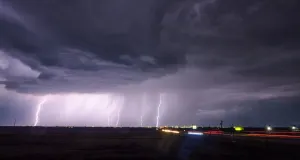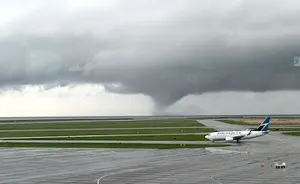
Solar Eclipse: Timeline of events, from start to finish
Here's what to expect before, during, and after today's solar eclipse
A lot is going to happen before, during, and after the total solar eclipse, and we want you to be ready for all of it.
As the moon progresses across the sun, shadows will take on a crescent shape, mirroring the progression of the eclipse.
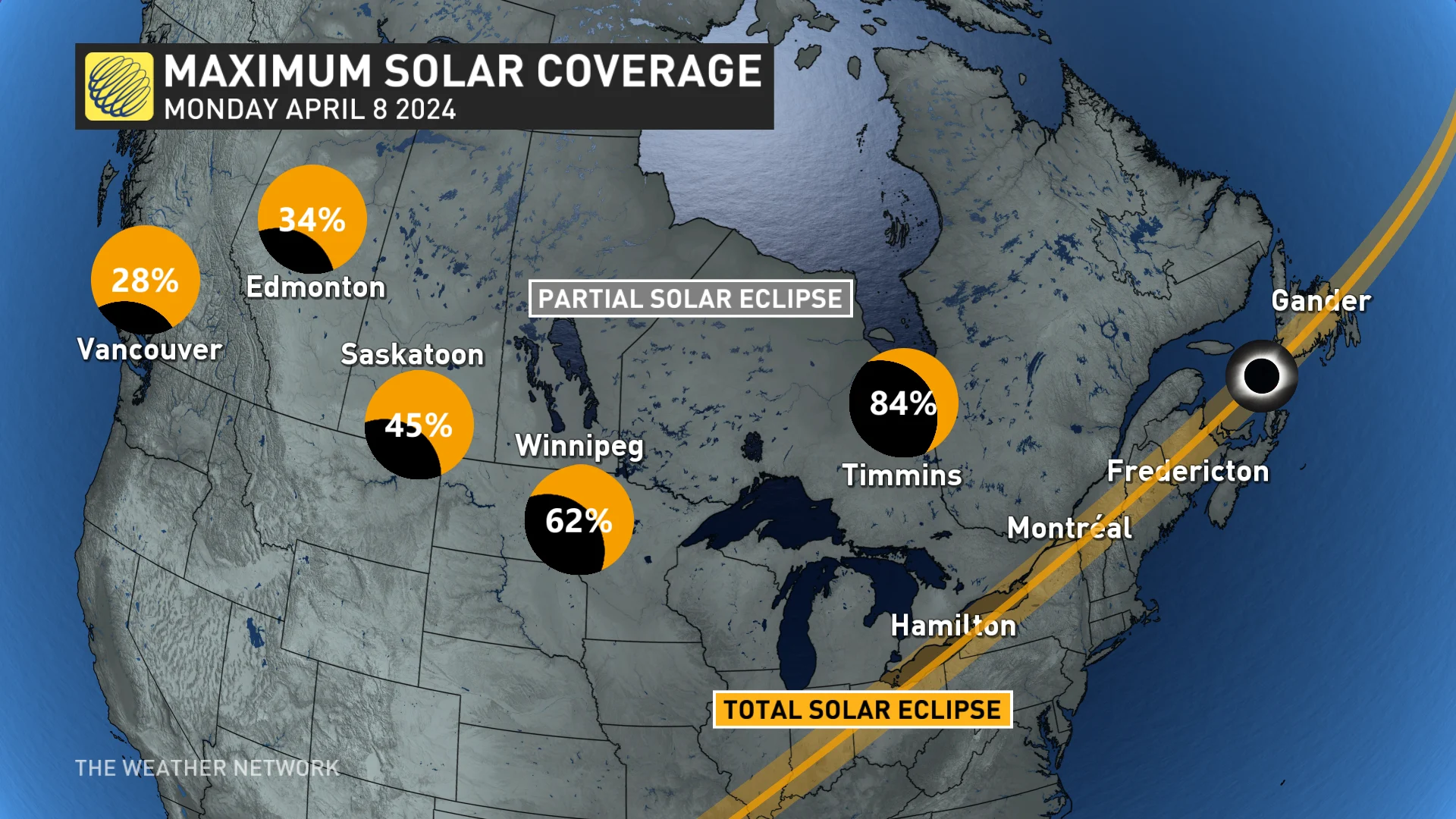
It’s important to have your eclipse glasses on when looking directly at the sun during the partial eclipse phase, but you can ditch the glasses for some shadow fun when in totality.
RELATED: Staring directly at the partial eclipse for just 5 seconds can cause permanent damage
Next, let’s turn to the sky.
"You won’t notice your surroundings getting darker until the sun is 70–80 percent covered, but then watch as the landscape changes to an eerie sepia tone," explains Tyler Hamilton, a meteorologist at The Weather Network. "People are known to feel uneasy when this happens."
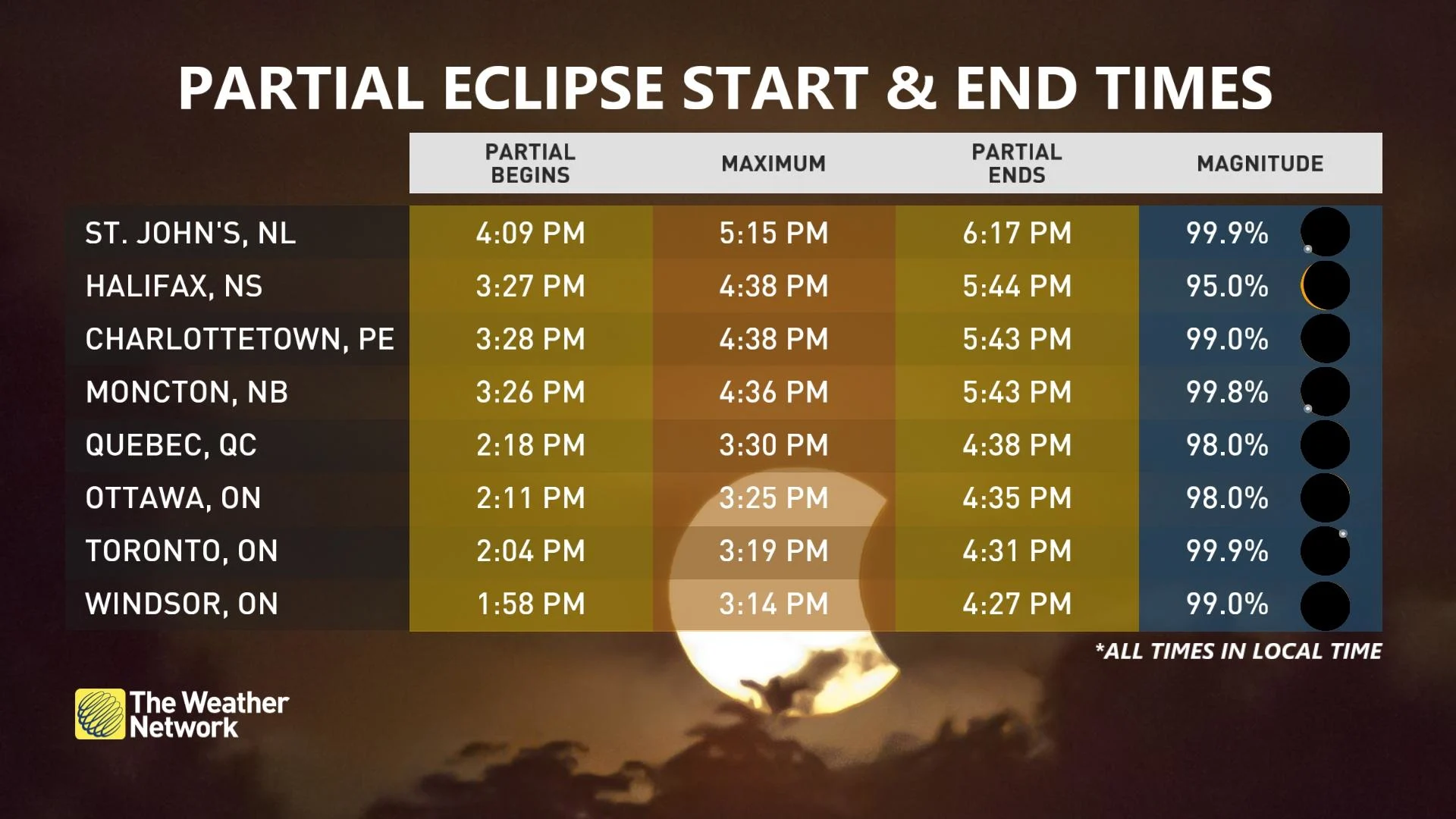
You’ll have to dress for a change in the weather, because if it’s dry, the temperature could drop by 4-6 degrees Celsius as solar radiation decreases. If it’s humid, it won’t be quite so dramatic.
"A drop in solar radiation will also impact clouds," adds Hamilton. "If there are any cumulus floating around, they will dissipate or even disappear entirely."
Wildlife will also be impacted. About 10 to 15 minutes before totality, if it’s not too noisy where you are, listen for crickets to start chirping.
About 90 seconds before totality, shadow banding occurs in the atmosphere.
"This is when the solar rays of light are bent," says Hamilton. "If you want this atmospheric phenomenon to really pop, throw down a white sheet and watch this display in action."
RELATED: Strange things will happen during the eclipse
WATCH BELOW: An eclipse affects our brains in remarkable ways
Next comes the umbra. It starts with a purple hue in the southwest sky about 90 seconds before totality, and as the darkest part of the moon’s shadow closes in, it will become dark very quickly. The sky turns a hard-to-describe shade of royal blue that few have ever witnessed.
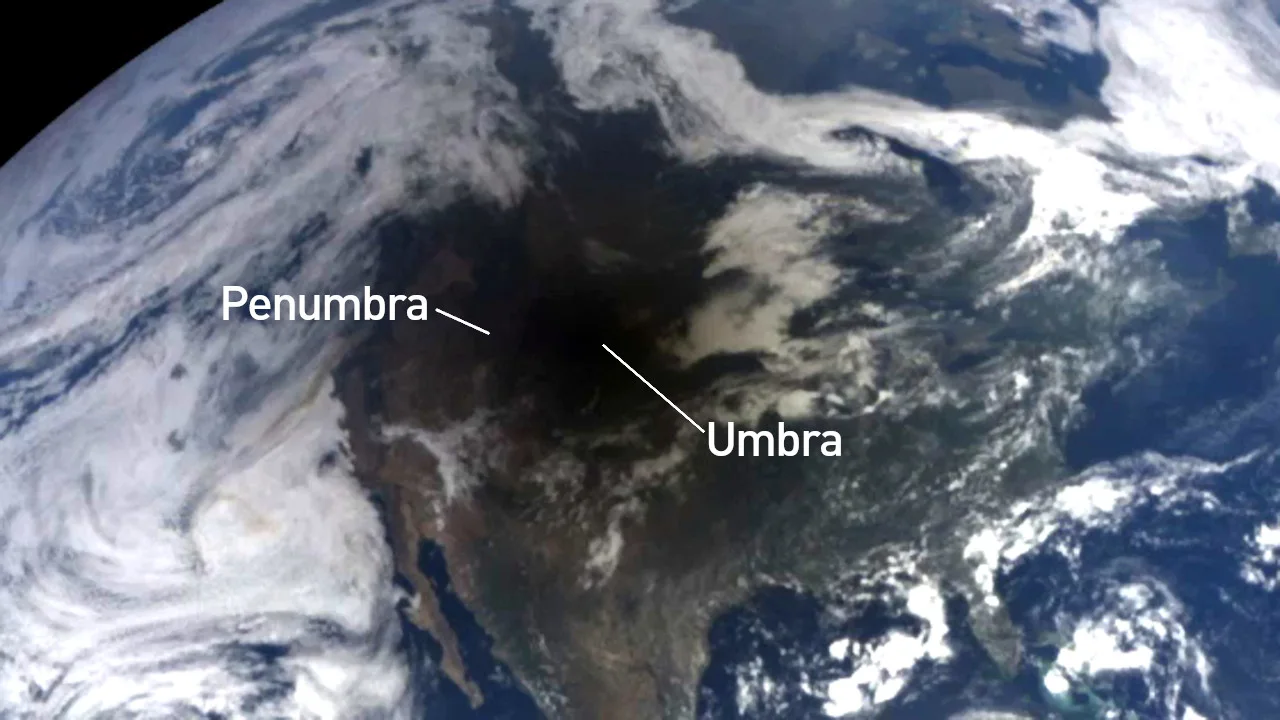
The Moon's dark umbra and diffuse penumbra are labelled on this image captured by the Deep Space Climate Observatory on August 21, 2017. (Credit: NASA/NOAA/Scott Sutherland, The Weather Network)
"And now, with this drop of solar energy, you're also going to notice a drop in the wind speed," Hamilton adds. "So keep an eye around you. The winds will slow to a crawl."
If you find yourself outside the path of totality, your eclipse journey will reach a crescendo here, with the aforementioned effects then happening in reverse.
At this point, you’ll notice the final pinpricks of the sun in the moon’s valleys. These are called Bailey’s beads and will last about 15 seconds before totality arrives. Make sure you still have your glasses on at this point.
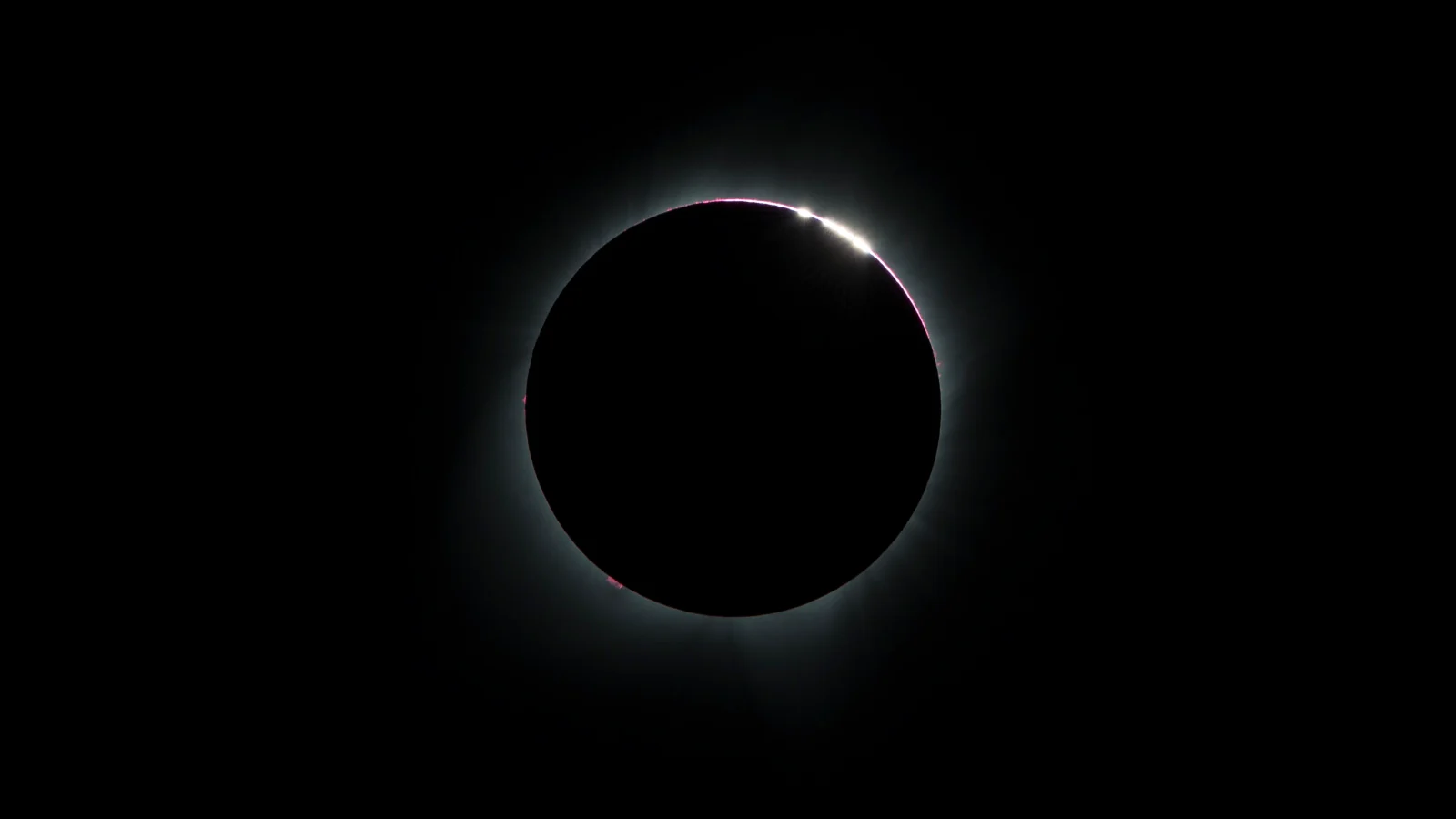
Baily's Beads, as seen during the August 2017 eclipse. (Credit: NASA/Aubrey Gemignani)
DON'T MISS: Totality, corona, Baily's beads - Do you know your solar eclipse terminology?
"Now Bailey's beads will converge into one ray of light, and you'll also get a faint ring of light surrounding the moon." explains Hamilton. "This is known as the diamond ring effect. And if you get extra lucky, you might just see a double diamond."
And now comes the moment you’ve been waiting for. Complete totality when the moon fully blocks the sun.
"At this point, you can safely take off your eclipse glasses and take in the experience. It’s said to be extraordinarily moving. It’s so rare that any one place on Earth only has a total solar eclipse once every 375 years," says Hamilton.
Once the sun is blocked, you’ll be able to see its atmosphere, called the corona. It’s over a million degrees Celsius and stretches millions of kilometres into space.
"It will look like ghostly wisps of white, and this plasma will be contorted by the sun's magnetic field," adds Hamilton. "And guess what? We are at the peak of an 11-year solar cycle. So we're expecting this show to be extra vibrant."
Once you’ve spent some time looking at the sun, glance around at the newly visible stars and planets for a once-in-a-lifetime experience.
After a few minutes of totality, the diamond ring effect will reappear, and that's a cue to put back on your solar eclipse glasses. That's when this atmospheric spectacle will play in reverse.
WATCH BELOW: How does a solar eclipse damage your eyes?
And now you know what to expect for the total solar eclipse! Happy and safe viewing!







